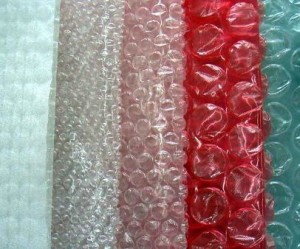 Bubble wrap is one of the most versatile packing materials around. Aside from cushioning fragile items and protecting them from impact during transport, bubble wrap can also keep products safe from the elements when properly sealed with packaging tape. They can also be used to fill spaces within a package to keep the items in place and prevent them from colliding with each other or banging onto the sides of the box during transit.
Bubble wrap is one of the most versatile packing materials around. Aside from cushioning fragile items and protecting them from impact during transport, bubble wrap can also keep products safe from the elements when properly sealed with packaging tape. They can also be used to fill spaces within a package to keep the items in place and prevent them from colliding with each other or banging onto the sides of the box during transit.
While they are more popularly known as sheets of plastic with bubbles on them, bubble wrap also come in bag form and as a built-in liner for envelopes (bubble mailers). A special type, anti-static bubble wrap (usually pink in color), is designed to protect electronic devices from damage caused by electrostatic discharge.
Bubble wrap also come in a variety of sizes: 1/8″ (super small), 3/16″ (small), 5/16″ (medium), and 1/2″ (large). These measurements refer to the size of the bubbles, particularly the height of the bubbles in a sheet and not their circumference. Each size offers a particular degree of protection for certain items. They are commonly available in rolls with standard widths of 12″ and 24″. The rolls are typically perforated every 12″.
Fragile items are best wrapped in super small or small bubble wrap. For optimum protection, wrap the item with several layers of bubble and use tape to keep it in place. Always wrap with the bubble side in direct contact with the item.
For less fragile products, medium or large bubble wrap are your best options.
Large bubble wrap is also a good material for filling up void space inside a box. It is more economical than packing peanuts especially when shipping light weight items.
For best results, different-sized bubble wrap can be used in packages: small and medium to protect the items and the larger ones to fill spaces and keep them in place.
